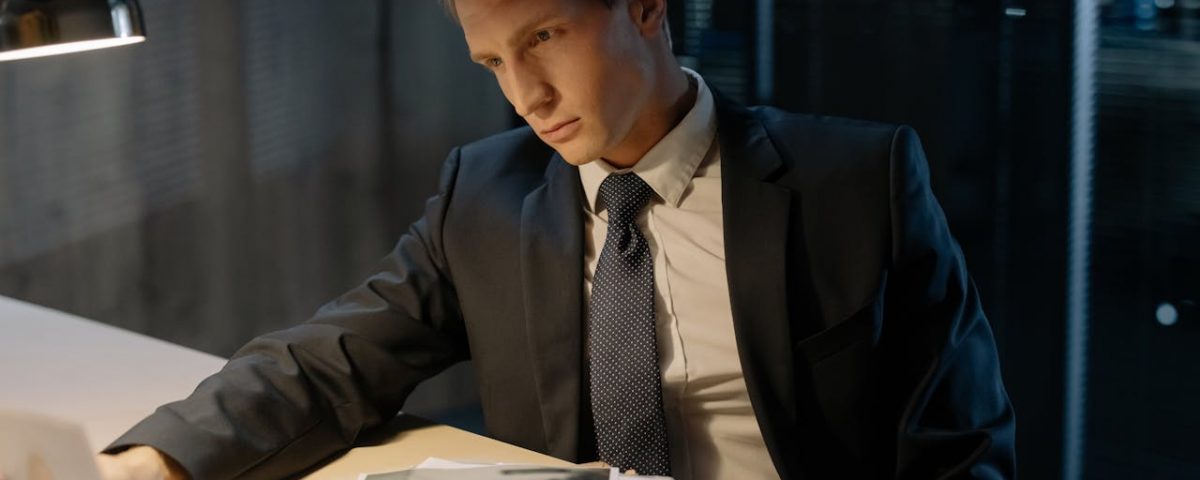3 Principles of Truth from a Private Investigator: A Speech Given to Students of Oklahoma State University in October 2024
I would like you to imagine the following. You are a private investigator. Your firm has been engaged to conduct an investigation into the current whereabouts of a woman. The client has provided limited details – the client only knows that the subject was named Ana Clara Beatriz and was last known to be living in Chickasha, Oklahoma, around 20 years ago. Chickasha, Oklahoma is a small town of just under 20,000 people roughly 30 miles the other side of Oklahoma city from Stillwater. Ana Beatriz is understood to be older than 50 years of age. The client wants to locate the subject female as she is entitled to an inheritance and today is the deadline to make contact with her. The client is happy for you to make contact with the subject if possible/necessary in the circumstances.
Your team has conducted detailed database and open source searches under the name Ana Clara Beatriz and there is only one listing that could be found. It is a land title document showing that a female with the name of the subject co-owns a property in Chickasha with other persons. Given the fact this is an uncommon name and the location is correct, you are certain this is the subject. Your team has tried all methods to contact the subject at the address but it appears she does not currently live there as there is a family renting the property currently. The family and the real estate agent have advised they do not know the current whereabouts of the subject but she used to live at the property and she is alive. The real estate agent mentioned that some or all of the co-owners of the property are understood to be in South America. Your team advised you that they could not find contact details for the other co-owners.
You do not have the time or the budget in the investigation left to conduct any other detailed searches. Who could you call in Chickasha who might know the subject and who might be able to put you in touch with her? The names on the title document are:
- Ana Clara Beatriz
- Maggie Aisling Connolly
- Perlah Tiuseco
- Maria del Rosario
- Marija Horvat

Have a think about it and I’m going to tell you the answer later.
When I was younger, I used to get into disagreements with people in circumstances where I knew I was right but I had no way to prove it. Sometimes, I became angry with these people and perhaps with myself because I didn’t have a way to convince them that they were wrong even though I knew that was the case.
As chance would have it, at age 30 I happened to move to an area in Sydney, the city in which I live, where an old private investigation firm operated. I applied for some work experience and hit it off with the owner Warren. So, after a variety of roles in other industries, including a stint teaching English in Japan with Oklahoma State University’s very own Kenneth Kern, I became a private investigator. This role as an investigator afforded me the opportunity to actively test my grasp of the truth on a daily basis and to substantiate my findings. While I’m not necessarily better at convincing people that I’m right, I am comfortable that I know the limits of my knowledge and, within that area of knowledge, I know what is true and what is not. Uncovering the truth is like learning a new sport or language – it needs to be done regularly and fairly intensively for a while in order to build up one’s skill level to an acceptable level. Given that our societies are now very fraught over what constitutes misinformation, it seems to be a strange thing that most people are rarely ever given logical strategies or methodologies that help them practically identify a relatively abstract concept like the truth. In any event, over the fifteen years in which I have been involved in investigations, I have developed some principles that I believe can help anybody uncover the truth and I’d like to talk about those principles today. And incidentally, after I started at the private investigation firm with Warren, I discovered how lucky I’d been to land the role – he showed me the next job applicant who mentioned in his application that he was a psychic investigator. Warren’s response was very terse, “You have failed the first test by not knowing I wouldn’t be interested in hiring you.”
I decided to make truth the focus of my speech because I believe identifying the truth is one of the essential components of making good decisions. Consequently, making good decisions is an important part of becoming a good leader over the long term. Identifying the truth is certainly not the only leadership characteristic but, in addition to luck, hard work, resilience and other factors, making the right decisions once you are in possession of the facts will help determine the path you follow in life. And if you can’t always make good decisions, it’s perhaps even more important to avoid making bad decisions that could lead to terrible outcomes. A true leader is able to weigh considerations without being unduly affected by any single one of them and, similarly, is able to see his or her emotions in the context of the broader circumstances.

I believe that bad leaders are negligent towards the truth and that evil leaders deliberately obfuscate the truth. As Voltaire said, “Those who can make you believe absurdities, can make you commit atrocities.” I’m going to quote some people today – this is not necessarily a sign that I share a worldview with these people, it’s merely to convey that I agree with their sentiment in this particular respect. Good leaders can identify what is required to further the particular cause they are tasked to handle and determine whether the available resources are sufficient for that purpose. They can contextualise requirements. They can identify opportunities and limitations. They can be honest with themselves about whether goals are being achieved. Now, it has been possible and it remains possible to be a leader without regard to the truth however, that is becoming harder and harder in the age of information and I believe it will become harder still in the future.
Some of you may be natural decision makers or leaders and may already have sophisticated processes for making good decisions, perhaps without even knowing it. You have an advantage but even excellent decision makers sometimes make mistakes – Warren Buffet is considered one of the best investors in history but he has made bad financial decisions that have been costly.
While we’re quoting investors, Stanley Druckenmiller, another well respected figure, said that everyone gets it wrong sometimes, but it’s a matter of how much you lose when you’re wrong and how much you gain when you’re right, so you need to go big when you have conviction. I would add to that that you need to err on the side of caution when you do not have very strong conviction. Erring on the side of caution is one of the principles I mentioned earlier that I’m going to raise today. I spend a lot of my working hours dealing with people who have made bad decisions. Often, these are people who have relied significantly on emotional decision-making in personal or business affairs and this has created problems which they now need to solve.
Let me clarify my thoughts here. Emotion is a very important factor in leadership and business. For example creative people, marketers and salespeople all rely on emotions to guide them, whether it be to craft an interesting story for an advertisement, motivate colleagues or foster an emotional connection with potential clients. Our gut helps us determine what we’re passionate about, where we belong and who we enjoy spending time with. Political leaders work to activate the emotions of voters because they know that emotional connections often override logical considerations. Jeff Bezos, one of the most successful business operators in history, stated once that “All of my best decisions in business and in life, have been made with heart, intuition, guts, not analysis.” What I’m doing here today is speaking about those times when your intuition has failed you or not adequately solved the problem yet or when you have an important, strategic decision to make with serious consequences and you want to consider all the options. If emotion isn’t working, try to find the truth. And if finding the truth isn’t working, try to find the emotion. If you can find a way to objectively discern the truth when it matters, you’ll have an advantage over a lot of other people who trust their feelings alone. After all, we don’t all have the business intuition of Jeff Bezos and, to be honest, I wonder if he’s recalling things accurately as he elsewhere said that he started Amazon as a way to find a business plan that would make sense in the context of the 2300% growth the internet was experiencing in the 1990s. This sounds like logical reverse engineering to me but I’ll let you make your own mind up about that.
So I’ll outline now my three main principles for uncovering the truth.

First principle
The first principle in uncovering the truth is that you must seek to access every available data point and all relevant information. I call this principle Casting a Wide Net. One day out of the blue, I received a call from a police officer asking for my advice. She was investigating what is called a “poison pen” case. For a considerable amount of time, an anonymous person had been sending malicious letters to an innocent victim. The writing on the letters was disguised and there was no fingerprint or DNA evidence that assisted so the cops had run out of ideas despite the fact that they did have a suspect. The police officer wanted to know how I would handle it. Now, if you think about this logically you may be able to come up with some ideas yourself. How do you cast the net widely with respect to a suspect who is writing nasty letters but is careful enough to conceal his or her handwriting style and fingerprints? Well, I suggested that the police do what we call a bin search. In North America, you might call it a trash search. The culprit would at some stage likely discard draft letters, documents on the same stationery, notes written in the same pen ink (which might be identifiable) or something else that might help in identification. It’s sometimes considered a legal grey area so don’t try this at home but, depending on the jurisdiction, one may be within one’s rights to collect trash put out for weekly collection on the sidewalk or as we would call it the footpath. In any event, around 3 weeks later, I read an article in the local paper about a longstanding mail pest who had finally been arrested. My only disappointment with the outcome was that I hadn’t charged a consultation fee. So in order to decide upon the best course of action, I had mapped out the likely behaviours of the culprit and conceived of a logical way in which evidence of offending could be documented. The important point for our purposes here is that by going a bit further than conventional wisdom dictated, we’d managed to uncover something relevant that we wouldn’t have otherwise obtained. I didn’t think, what is the way that this is normally done, which is what the police had thought. I thought to myself, how can I reverse engineer the desired outcome by taking into account any shred of evidence that might be able to be obtained.
At a broader level, think of a crime scene analogy. If you miss any shred of evidence, like a hair from the culprit in the carpet, you might end up going down the wrong track in the investigation and have no chance of uncovering the truth because one crucial piece of evidence was not found at the outset. At every level of an investigation, every conceivable lead must be found and considered.
Now I don’t imagine many of you will be planning on becoming private investigators so we’ll discuss how you can get in the habit of uncovering the truth yourself in order for this principle to have some practical utility for you.
One of the services that many investigators provide is database and online searches, sometimes called OSINT, short for open source intelligence. Typically, this involves conducting background checks or conducting searches to endeavour to locate a person. If you know anything about OSINT, you know that there are some different types. As investigators, we are typically tasked with learning about a person or business. But OSINT also encompasses military, security and intelligence operations. Any citizen these days has at his or her command free powerful OSINT tools like shipping, mapping, environmental and air flight websites. Resources like the web and social media have an enormous amount of up to date information. Many of these resources are available to you. If you have an interest in researching or in news and geopolitics or leaders or companies and stocks, you can leverage that interest over time to become skilled at open source research. In conducting research, you come to learn the importance of the principle of casting a wide net especially when you encounter conflicting or ambiguous information, which is just about every time. In fact, in an investigation, if I don’t encounter some conflicting or ambiguous information, it probably means I’m not doing my job properly.
So the purpose of this principle is that you must approach things without taking shortcuts and take into account everything that you can and often more than you are asked to. Depending on your field of expertise, it might take you years to develop the knowledge about where the appropriate resources are, but if you want to be an expert and a leader, you must be diligent in your approach. Make it a habit. When you’re not sure, seek the advice of an expert. Sometimes you’ll have to process a lot of useless information to find a nugget of truth. The late Charlie Munger, Warren Buffett’s business partner, believed that good investment opportunities are few and far between and they both read a lot of company reports but made relatively few decisions to invest.
In your role as a manager or a leader you can cast the net widely to properly identify any pending risks or opportunities. You can cast the net wide to find excellent talent and resources. You can consider every piece of customer feedback and every data point reported to you by staff members as a potentially valuable source of information to be considered. Go further, go deeper, go wider than you think you need to in casting your net and you might be surprised at the results.

Principle 2
So if you have found a way to adopt principle 1 and learned effective ways to gather information you’ll have a lot of data that you need to process. Principle 2 is to Circumambulate Each Data Point. Circumambulate is a fancy word for “walk around” and data point is a fancy phrase for “piece of information.” What I mean here is that, once a piece of information is deemed to be even possibly relevant to your inquiry, you must examine it from any possible perspective. This will give you the best objective understanding of the data point and will help you contextualise it in relation to other evidence in light of your goal.
I remember hearing an interview with the actor Matthew McConaughey, in which he was describing how he created his characters. He said that he read his scripts and imagined his characters saying the lines with every conceivable emotion. He would then pick the right emotional state for the scene. Somewhat similarly, in an investigation, we try to decontextualise data and consider it in a different light in order to put it in its proper context. Picasso said, “It took me four years to paint like Raphael, but a lifetime to paint like a child.”
In order to illustrate the second principle, let’s return to the investigation of Ana Clara Beatriz. In the movie the Silence of the Lambs, Hannibal Lecter paraphrases Marcus Aurelius in explaining how to solve a case. He says, “Of each particular thing, ask what is it in itself? What is its nature.” Spend a few moments looking at the only evidence you have, the names on the land title document indicating that these five women own this house and see if you have any idea who might know these women.
- Ana Clara Beatriz
- Maggie Aisling Connolly
- Perlah Tiuseco
- Maria del Rosario
- Marija Horvat
Firstly, why would five women own a property together? It seems unusual. Secondly, what can we learn about these women from their names. If we research them, we discover that Beatriz is Spanish/Portugese, Connolly is Irish, Tiuseco is Filipino, del Rosario is Italian and Horvat is Croatian. Is there anything that these countries share, taking into account the first point above? Well, all these countries have large Catholic populations. Most towns have a Catholic church and the place to make inquiries in this job would be with the local Catholic Diocese. This imaginary case is analogous to one I worked on, and solved, by applying the above principles.
In some cases, you need to draw correlations between many different data points. In cases like this, the answer is staring you in the face and you just need to find a way to comprehend it. It’s a bit like the mental equivalent of letting your eyes go out of focus to see one of those old 3 dimensional pictures. The client may have even known things like the subject’s religion but may have decided those details were irrelevant. The ambiguities that we have to try to clear up are often foundational meaning it might sometimes be necessary to ask basic questions of the client or of someone else and this can make you look unintelligent but, as Stoic philosopher Epictetus said, “If you want to improve, be content to be thought foolish and stupid.” Sometimes we will go so far as to advise our client that the instructions they have issued us are not suited to the task and that we suggest amending the proposed course of the investigation so as to have the best prospect of uncovering the truth. This may deflate the ego of the client, especially if they’re a lawyer, but we ultimately want the best outcome. By the way, one piece of unsolicited advice is if you can be involved in an industry that doesn’t involve much interaction with lawyers, then that’s a great option.
As with the first principle, you’ll need to work at this principle. Regularly test your hypotheses and see if you’re proven right later.
Principle 3
Principle number 3 is to Err on the Side of Doubt.
In his Principles for Success, hedge fund founder Ray Dalio wrote, “Recognize that your ability to deal well with “not knowing” is more important than whatever it is you do know.”
I’m not going to discuss this principle at length. Instead, I’m going to suggest you do a very short piece of homework and read the story of Stanislav Petrov, a Russian man who was credited with saving the world from nuclear war in 1983. Just Google his name and read what happened. I believe this is the perfect illustration of the importance of this principle. And I believe that if you read about his story, what he did was follow each of the principles I have set out today. I trust you’ll never be in as precarious a position as Mr Petrov but I hope you will be able to apply these principles and use your own resources to achieve success. The world needs good leaders, perhaps now more than at any time since the Petrov incident so do your best in whatever field of endeavour you pursue. Good luck.
By Lachlan Jarvis
Contact Us Now!



